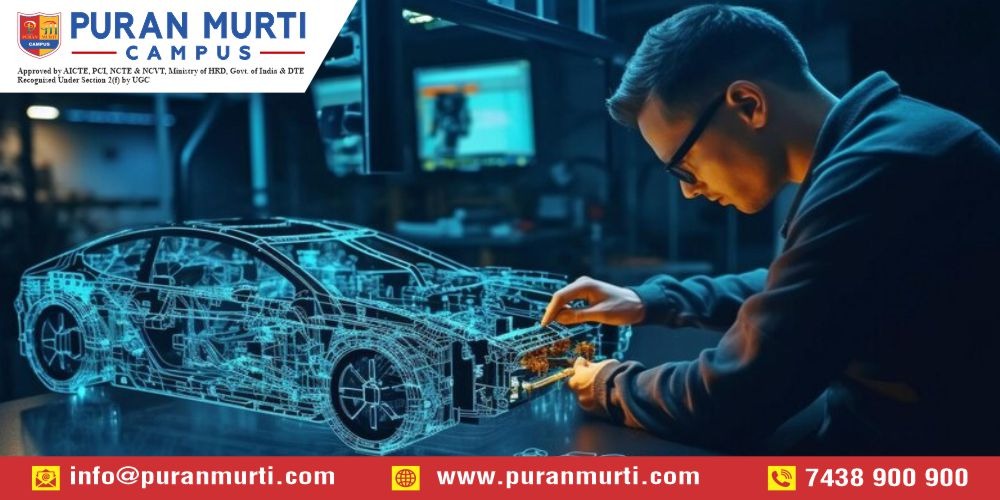Understanding the Curriculum
A. Core Subjects Covered
The curriculum of Diploma in Automobile Engineering covers core subjects essential for understanding and mastering automotive technology. These include Automotive Design and Development, Vehicle Dynamics, Automotive Electronics, and Engine Mechanics and Thermodynamics. These subjects provide students with a comprehensive understanding of vehicle structure, performance, electronic systems, and powertrain dynamics, preparing them for various roles in the automotive industry.
B. Practical Training Components
Practical training components in automobile engineering encompass workshop sessions, hands-on projects, and industrial internships. Workshop sessions provide hands-on experience with tools and equipment used in vehicle maintenance and repair. Hands-on projects involve designing and building automotive systems or components. Industrial internships offer students opportunities to gain real-world experience and insights by working with automotive companies, enhancing their practical skills and industry knowledge.
C. Elective Courses Offered
Elective courses offered in automobile engineering broaden students’ understanding of specialized areas within the field. Alternative Fuel Vehicles explore sustainable energy sources like electric and hybrid technologies, addressing environmental concerns and emerging trends in the automotive industry. Automotive Safety Systems delve into the design and implementation of safety features to enhance vehicle occupant protection. Vehicle Maintenance and Servicing cover essential techniques and procedures for ensuring optimal performance and longevity of automobiles, preparing students for roles in maintenance and repair services.
Advantages of Pursuing Diploma in Automobile Engineering
A. Cost-effectiveness compared to Degree Programs
Pursuing a diploma in automobile engineering is often more cost-effective than enrolling in a degree program. Diploma courses typically have shorter durations and fewer academic requirements, resulting in lower tuition fees and expenses. This affordability makes it accessible to a broader range of students, reducing financial barriers to entry into the field of automobile engineering.
B. Practical-oriented Learning Approach
Diploma programs in automobile engineering emphasize hands-on learning and practical skills development. Students engage in workshops, laboratory sessions, and projects that simulate real-world scenarios encountered in the automotive industry. This practical-oriented approach enables students to gain invaluable experience, problem-solving skills, and technical expertise, better preparing them for the challenges of the workplace.
C. Faster Entry into the Workforce
Compared to degree programs, diploma courses typically have shorter durations, allowing students to enter the workforce more quickly. With focused training on essential skills and knowledge relevant to automobile engineering, diploma graduates are equipped to seek employment in various sectors of the automotive industry sooner. This expedited entry into the workforce enables diploma holders to start their careers earlier, gaining valuable experience and opportunities for advancement.
Conclusion
In conclusion, pursuing a Diploma in Automobile Engineering offers a promising pathway to a fulfilling career in the dynamic automotive industry. With its comprehensive curriculum, practical training components, and cost-effective nature, this program equips students with the necessary skills and knowledge to thrive in diverse roles. Graduates emerge ready to contribute to innovation, sustainability, and advancement within the field, driving the future of automotive engineering forward.

